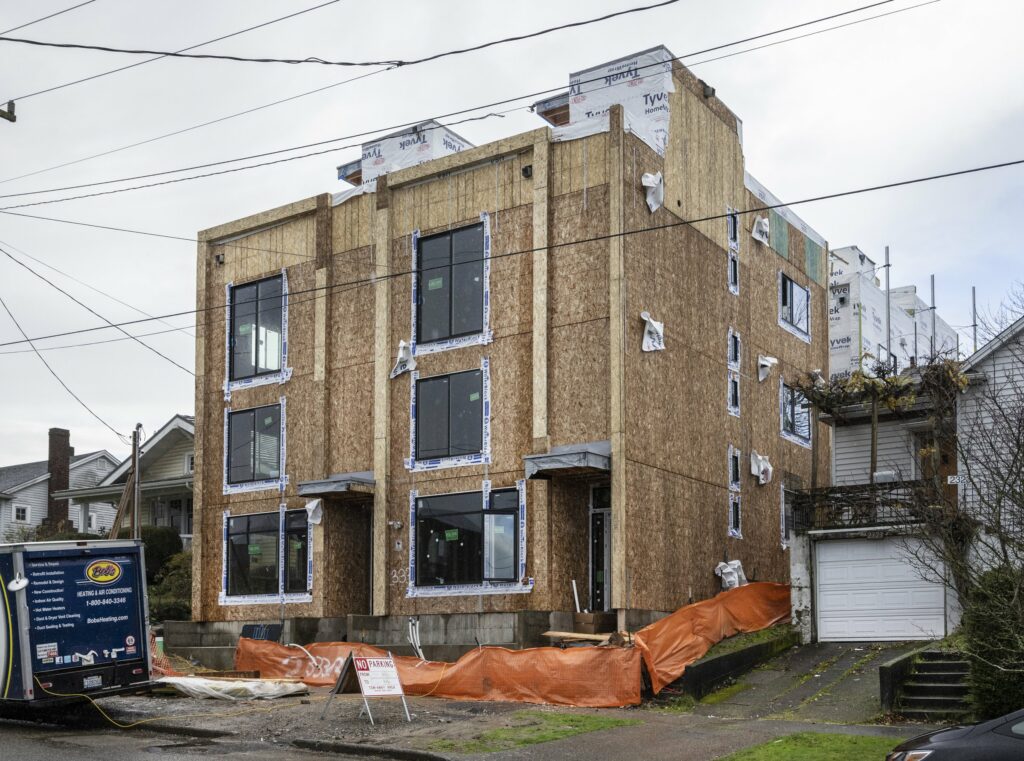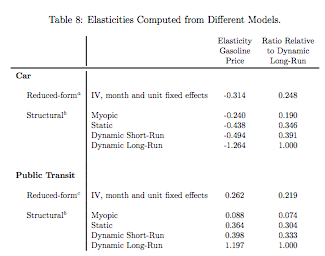What City Observatory did this week
The financial fallout from Louisville’s I-65 boondoggle. As we showed earlier, Kentucky and Indiana both wasted a billion dollars on doubling the capacity of I-65 across the Ohio River, and also showed how to eliminate traffic congestion. The $1 to $2 tolls it charges I-65 users slashed traffic in half, and led to essentially none of the expensive new capacity they built being used. But tolls don’t cover anywhere near the cost of building the widened crossing. The two states borrowed heavily against future federal grants and hoped for toll revenues, as well as pledging their own resources.
They used creative finance to “backload” the repayment of the debt–keeping payments artificially low in earlier years–hoping that higher tolls and more traffic will bail them out. Already, it’s clear that strategy is failing–traffic is so far below projections, that Kentucky has had to refinance its debt, extending the period of repayment by almost another decade, and adding tens of millions of additional interest cost. The latest projections show the I-65 crossing will never carry as much traffic as it did before it was widened, and that future generations will be paying off the project’s debt, even as they increasingly suffer the consequences of climate change.
Must read
1. House Bill would force states to address transportation emissions. The fate of the “Build Back Better” legislation is very much in the balance. The Washington Post examines one of the bill’s key provisions would create incentives for states to spend federal transportation dollars in ways that reduced greenhouse gas emissions. State highway departments bristle at the thought, arguing that climate change isn’t their responsibility–notwithstanding the fact that transportation is the largest source of greenhouse gas emissions in the nation. Their efforts to dodge responsibility prompted the Center for American Progress’s Kevin DeGood to comment “It is farcical to suggest that state DOTs do not deeply influence greenhouse gas emissions from the transportation sector.”
The Post’s story highlights the growing grassroots recognition that transportation is a huge, and largely unaddressed aspect of the climate crisis. In Portland, young climate activists have been protesting at the headquarters of the Oregon Department of Transportation, calling for an end to freeway widening to save the planet. The Post quotes 15 year old Adah Crandall:
“As a high-schooler, my peers and I shouldn’t have to be spending our time organizing against freeway expansions because we’re worried about the climate impact. That’s pretty ridiculous,” she said. “I feel a responsibility to do that because I’m afraid of the decisions that will be made if we don’t keep showing up.”
2. Are Seattle’s affordable housing fees resulting in fewer townhouses? For the past several years, Seattle has been implementing its Mandatory Housing Affordability (MHA), which requires most multi-family developers to either dedicate a portion of their units to low or moderate income households, or pay a fee. A new report from a group of smaller scale developers in Seattle claims that the fee has eliminated most new townhouse construction in the city.

Townhouses, which are often duplexes, are the kind of gentle density that creates somewhat more affordable housing in expensive cities like Seattle. The fact that developers have to pay the average $32,000 per unit fee up front, prior to construction, is especially onerous. In theory, the MHA program gives developers a “density bonus” allowing them to build more square feet of housing than under prior zoning rules, but for townhouses, the economic value from adding a fourth walk-up floor on a townhouse doesn’t necessarily offset the cost of the fee. The group points out that townhouse permit applications have fallen 67 percent in the past two years. Fewer townhouse units being constructed means even more competition for the existing housing stock, which is likely to make the city’s affordability problems even worse.
3. Austria stops building freeways. Greens formed a coalition government with conservative parties in Austria, and bargained for key cabinet positions, including the transportation portfolio. The new minister for transportation announced that henceforth, the country will stop expanding road capacity as a means of meeting its greenhouse gas reduction obligations. “More roads mean more cars and more traffic,” Transport Minister Leonore Gewessler told the AFP news agency.
New Knowledge
Price elasticity of demand for travel. How much do changes in prices, especially the price of fuel, matter to how much, and by what modes people travel? That question is one of the microeconomic keys to understanding urban travel demand, and not incidentally, to addressing climate change. A new paper from University of Florida economist Javier Donna sheds new light on the answer, using a novel and detailed methodology aimed at overcoming the problems with earlier estimates. His key finding: in the long run (periods more than a year) travel behavior is much more responsive to gasoline prices and previously estimated. Donna reports that with respect to gas prices, travel is elastic: a one percent change in gas prices generates more than a one percent change in automobile travel. This suggests that pricing can be a much more powerful and effective tool than previously thought.
This is not the first study to estimate price elasticity of demand for travel–there’s actually a substantial literature. But many of these estimates are confounded, ironically, by the high volume of data about gas prices. Gas prices fluctuate on a weekly and sometimes daily basis (usually driven by fluctuations in the global oil market). Travel behavior responds to prices, but individual consumers/travelers face what economists call “switching costs”–for example, if you’re a regular car driver, riding the bus requires learning the bus schedules and routes. In the face of minor and frequent ups and downs in gas prices, consumers exhibit considerable inertia, and its usually the case that only fairly large and seemingly permanent (or at least long-lasting) price changes prompt many people to change behavior.
What that means as a practical matter is that simple-minded statistical measures that simply look at the gross correlation between weekly fuel prices and vehicle travel volumes find only a modest (in economic terms “inelastic”) effect on travel patterns. The short term noise tends to obscure finding any long term effects, and, as with most economic goods, elasticities are greater in the long-run than the short-run.
Donna’s paper constructs and calibrates a model that explicitly incorporates switching costs. It uses data gathered in the Chicago area from 2001 through 2009, to look at how shifts in gas prices influence demand for travel (measured by the volume of cars on Chicago area roads and transit ridership). For comparative purposes, Donna also constructs two other models that mimic the structure of earlier modeling efforts (myopic and static) to show how his more complex and realistic dynamic modeling produces different results. The key estimates are shown below.
Donna estimates that the elasticity of travel with respect to gas prices is about .5 in the short run and about 1.3 in the long run. This means a 10 percent increase in gas prices is associated with about a 5 percent decline in travel in the short run, and a similar increase is associated with about a 13 percent decrease in travel in the long run. These measures are for permanent or sustained increases in prices, not daily or weekly fluctuations. The the “long-run dynamic” estimate–the one that matters most for policy–is considerably higher than the estimate from either the myopic or static models (which fall into the range of estimates produced by other studies.
Donna’s paper suggests that prices can an even more important role in supporting good transportation policy than previously thought. His finding that travel demand is actually elastic with respect to price (a one percent increase in gas prices decreases driving by more than one percent), means that pricing will change travel behavior, a fact, unfortunately, that many transportation planners are simply in denial about. Perhaps, no longer.
Javier D. Donna, “Measuring Long-Run Gasoline Price Elasticities in Urban Travel Demand”, RAND Journal of Economics, forthcoming, https://doi.org/10.1111/1756-2171.12397. and
Donna, Javier D., Measuring Long-Run Gasoline Price Elasticities in Urban Travel Demand (May 10, 2021). Available at SSRN: https://ssrn.com/abstract=3285200.




